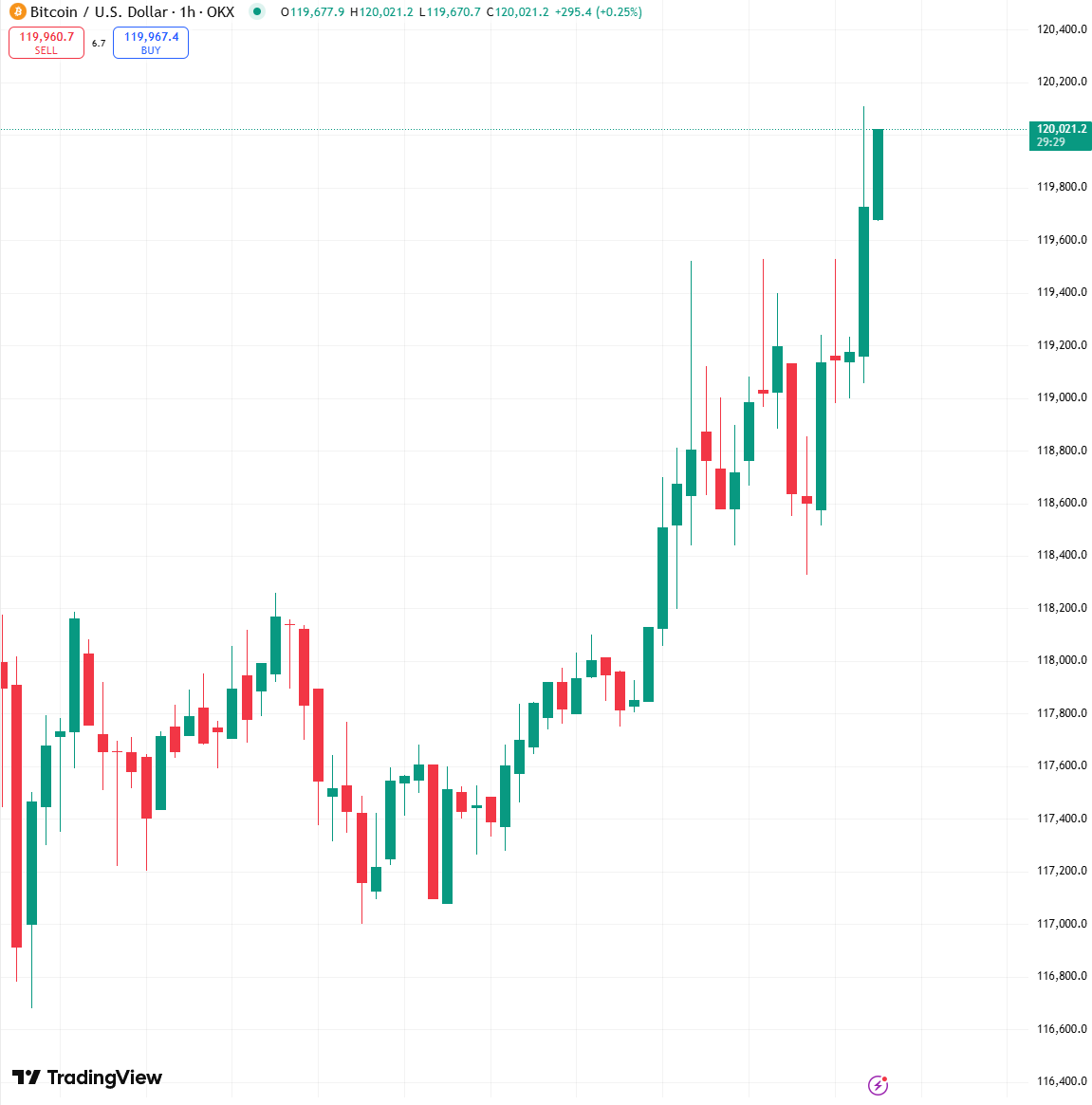Bitcoin’s Strategic Inflection Point
From Fringe to Reserve Asset
💬 What makes this moment different isn’t just price—it’s position. Bitcoin is no longer speculative—it is becoming strategic.
Bitcoin has entered a new phase. It hit a new all-time high today, surging past $123,000—its strongest rally yet—driven by accelerating institutional inflows, favorable legislation, and mounting concern over the weakening U.S. dollar.
Once dismissed as a fringe experiment, Bitcoin is now edging into the mainstream of global finance. From Wall Street boardrooms to Capitol Hill and even central banks abroad, momentum is building toward a future where Bitcoin plays a strategic role in portfolios, policy, and reserves.
In a recent interview titled “25 Year Wall Street Insider: $1M Bitcoin Soon Is Just the START” on Brandon Gentile’s YouTube channel, Matt Hogan, CIO of Bitwise, presents one of the clearest articulations yet of Bitcoin’s current trajectory. Hogan argues there is a “vanishing window”—a brief and closing moment during which retail investors can accumulate Bitcoin before trillions of dollars in institutional capital flood the market.
For years, Bitcoin was viewed as an outsider asset—volatile and inaccessible for institutions. That is no longer the case. Hogan highlights that the infrastructure for large-scale institutional adoption—regulated ETFs, custodial solutions, lending products, and options markets—is now firmly in place, allowing traditional investors to engage with Bitcoin confidently. He believes this shift will be transformative.
The rally in cryptocurrencies has not just been limited to Bitcoin, but throughout the new industry of decentralized finance. Ethereum rose 5% to above $3,000, and composite crypto indices gained ~3%1.
The Dollar Declines, Bitcoin Rises
These flows coincide with a roughly 10% drop in the U.S. Dollar Index (DXY) since late 2023,2 its steepest six-month decline since 1973. A weaker dollar often drives capital toward fixed-supply assets like Bitcoin, which is positioned as macro insurance when confidence in fiat erodes.
The signs of transformation are everywhere. On June 25, 2025, William Pulte, the newly appointed Director of the Federal Housing Finance Agency (FHFA), surprised markets by ordering Fannie Mae and Freddie Mac to prepare to include cryptocurrencies as an asset for mortgage qualification purposes. This triggered speculation about crypto entering the multi-trillion-dollar U.S. housing finance market.
❝ Today I ordered the Great Fannie Mae and Freddie Mac to prepare their businesses to count cryptocurrency as an asset for a mortgage.
—William J. Pulte, FHFA Director
Policy Shifts: From Crypto Chaos to Congressional Clarity
Congress is actively building the framework for institutional adoption. In June, the Senate passed the bipartisan GENIUS Act by a 68–30 margin, establishing strict rules for stablecoins—including full reserves, audits, and redemption protocols. "Crypto Week" in the House will debate the GENIUS Act, the Clarity Act (SEC/CFTC jurisdiction), and the Anti-CBDC Surveillance Act. Senator Cynthia Lummis’ BITCOIN Act proposes a federally audited Strategic Bitcoin Reserve with cold-storage infrastructure. These efforts follow President Trump’s March executive order mandating the retention of seized Bitcoin by federal agencies.
A Measured Perspective vs. Risks
Institutional enthusiasm also extends beyond policy. BlackRock’s IBIT—its most profitable ETF in the firm’s history— now manages over $80 billion in BTC, while total spot ETF inflows exceed $50 billion3. Larry Fink describes Bitcoin as “digital gold,” a credible hedge against macroeconomic instability4.
But skepticism lingers. During Gary Gensler’s tenure, the SEC took a hard line on crypto, labeling it the “Wild West.” Since January, Acting Chair Mark Uyeda has launched a new Crypto Task Force, and SEC Chair Paul Atkins—confirmed in April—has pledged to develop a clear regulatory framework for digital assets.
A Global Pivot to Crypto Infrastructure
The Bank for International Settlements (BIS) warns that private digital assets could undermine central bank authority. Skeptics question Bitcoin’s real-world utility in systemic crises. Unlike U.S. Treasuries, Bitcoin is not yet deeply embedded in the plumbing of global finance. If a crisis drives demand for collateral and dollar liquidity, Bitcoin could be sidelined in favor of more conventional safe havens.
Moreover, Bitcoin’s energy-intensive mining could become a flashpoint for ESG-focused funds and regulators, while the imposition of punitive taxes on crypto transactions might dampen institutional enthusiasm.
Globally, the shift is gaining momentum. Hong Kong has approved Bitcoin and Ethereum ETFs to boost its status as a digital finance hub. The UAE is heavily investing in crypto mining and infrastructure. BRICS nations are accelerating de-dollarization, with some reportedly exploring Bitcoin as a reserve alternative outside traditional banking systems. Meanwhile, countries like Argentina and Turkey wrestle with runaway inflation and currency volatility—fertile ground for alternative monetary systems. All are candidates to hedge against dollar diplomacy and Western financial influence.
Keep reading with a 7-day free trial
Subscribe to econVue to keep reading this post and get 7 days of free access to the full post archives.



